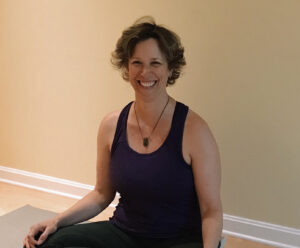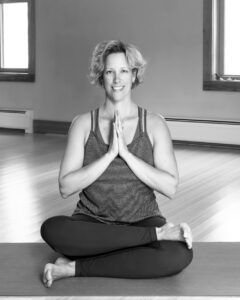In the quest for improved mental and physical well-being, many are turning to breathwork—a powerful practice that utilizes conscious breathing techniques to promote relaxation, reduce stress, and aid in recovery. Breathwork, often overlooked, is a simple yet profound tool that can transform your health. This article explores various breathwork techniques and their benefits, providing you with a valuable resource for enhancing your overall well-being.
When I first learned about breathwork in yoga I “learned” that my breathing was all wrong. My body didn’t move the way it “should” and I put so much effort into “fixing” my breathing that everytime I started to pay attention to my breath I’d get more anxious and start manipulating it to be better. What I came to understand is that our breath breathes us in lots of ways depending on what is happening. When I prioritized the very important teaching of “gentle effort” and that a little goes a long way, I started to realize these powerful benefits! Let your practices be short and focused, as instructed below, and notice the effect so you can choose what’s good for you!
Understanding Breathwork
Breathwork involves intentionally altering your breathing patterns to achieve specific physical and mental outcomes. It encompasses a variety of techniques rooted in ancient practices such as yoga and meditation, as well as modern therapeutic methods. By focusing on your breath, you can influence your autonomic nervous system, leading to profound changes in your body and mind.
Techniques for Relaxation and Recovery
Note: It is important to approach breathwork with gentle effort. There is no one “right way” to breathe, as long as you are breathing! Before any of the practices below take a few moments to follow your natural breath before trying a technique, and again after finishing with the technique. It’s best to choose one method and practice that for several days or weeks and see how it’s affecting you.
Diaphragmatic Breathing (360 degree Breathing)
Diaphragmatic breathing, also known as belly breathing and 360° breathing, engages the diaphragm more actively than the chest, allowing for deeper, more efficient breaths.
How to Practice:
- Sit or lie down in a comfortable position.
- Place your hands around your lower ribs. Pointer finger resting towards the front ribs, thumb on the back and the space between along the lateral sides of your waist and ribs.
- Inhale smoothly through your nose, allowing your ribs to expand in all directions, front, back and sides. Exhale slowly through your mouth, letting your rib cage gently pull towards your center. . Eventually switch to exhale out your nose when possible.
- Repeat for 5-10 minutes, focusing on the expansion and contraction around your torso and rib cage..
Benefits:
- Reduces stress and anxiety
- Lowers blood pressure
- Improves oxygen delivery to the body
Box Breathing (Square Breathing)
Box breathing is a simple yet effective technique used to enhance focus and calm the nervous system.
How to Practice:
- Sit comfortably with your back straight.
- Inhale through your nose for a count of four.
- Hold your breath for a count of four.
- Exhale through your mouth for a count of four.
- Hold your breath for a count of four.
- Repeat the cycle for 5-10 minutes, eventually start to exhale out your nose
Benefits:
- Increases mental clarity and focus
- Reduces stress and anxiety
- Stabilizes the nervous system
4-7-8 Breathing
The 4-7-8 breathing technique, developed by Dr. Andrew Weil, is designed to promote relaxation and improve sleep quality.
How to Practice:
- Sit or lie down comfortably.
- Inhale quietly through your nose for a count of four.
- Hold your breath for a count of seven.
- Exhale strongly through your mouth for a count of eight.
- Repeat the cycle for 4 rounds twice each day. After a few weeks you can work up to 8 rounds. You’ll notice sustained change after 4-6 weeks of practice.
Benefits:
- Promotes relaxation and reduces anxiety
- Helps in falling asleep faster
- Enhances lung capacity
Alternate Nostril Breathing (Nadi Shodhana)
Alternate nostril breathing is a yogic practice that balances the left and right hemispheres of the brain, promoting mental clarity and relaxation.
How to Practice:
- Sit in a comfortable position with your spine straight.
- Use your right thumb to close your right nostril.
- Inhale deeply through your left nostril.
- Close your left nostril with your right ring finger and release your right nostril.
- Exhale through your right nostril.
- Inhale through your right nostril, then close it with your thumb.
- Release your left nostril and exhale through the left nostril.
- Repeat the cycle for 5-10 minutes.
Benefits:
- Balances the nervous system and invites brain coherence
- Reduces stress and anxiety
- Enhances focus and mental clarity
Resonance Breathing (Coherent Breathing)
Resonance breathing involves breathing at a rate of 5-6 breaths per minute to achieve a state of coherence in the heart and mind.
How to Practice:
- Sit or lie down comfortably.
- Inhale through your nose for a count of five.
- Exhale through your nose for a count of five.
- Continue this pattern for 10-20 minutes, maintaining a steady and rhythmic breath.
Benefits:
- Promotes heart coherence
- Reduces stress and anxiety
- Enhances emotional regulation
Benefits of Breathwork for Relaxation and Recovery
Reduces Stress and Anxiety
Breath work can activate the parasympathetic nervous system, which helps calm the body and mind, reducing stress and anxiety levels.
Enhances Emotional Well-being
By promoting relaxation and mindfulness, breathwork can improve mood and emotional resilience, helping you cope better with life’s challenges.
Improves Sleep Quality
Many breathwork techniques promote relaxation and reduce insomnia, leading to better sleep quality and overall restfulness.
Boosts Physical Recovery
Improved oxygenation through conscious breathing enhances cellular repair and recovery, making breathwork beneficial for athletes and those recovering from injuries.
Enhances Mental Clarity and Focus
Breathwork techniques like box breathing and alternate nostril breathing can sharpen your focus and increase mental clarity, aiding in better decision-making and productivity.
Conclusion
Breathwork is a powerful, accessible tool for enhancing relaxation, reducing stress, and supporting physical and emotional recovery. By incorporating these techniques into your daily routine, you can experience profound benefits for your overall well-being. Whether you’re new to breathwork or looking to deepen your practice, these methods offer a natural and effective way to improve your quality of life.
Note: Sometimes breathwork can be contraindicated for folks with certain conditions such as cardiovascular disease (angina, previous heart attacks, or strokes), detached retina, glaucoma, aneurysm in brain or abdomen, kidney disease, severe asthma, epilepsy, pregnancy, lung conditions, recent surgery, and any other medical, physical or psychiatric condition (PTSD, bipolar, schizophrenia, etc.) which would impair or affect the ability to involve in deep physical and emotional release.
If you would like to receive these notes in your inbox with exercises and practices sign up for my newsletter here!
Remember: this post is for informational purposes only and may not be the best fit for you and your personal situation. It shall not be construed as medical advice. The information and education provided here is not intended or implied to supplement or replace professional medical treatment, advice, and/or diagnosis. Always check with your own physician or medical professional before trying or implementing any information read here.





